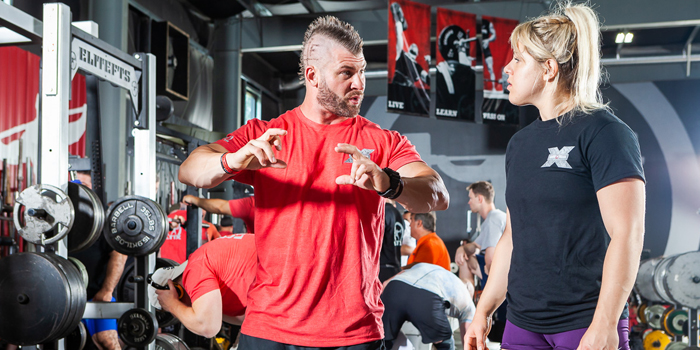
We teach gym owners to measure a few basic metrics. In the Founder and Farmer phases, you want to track:
- ARM: Average Revenue per Member per month
- LEG: Length of Engagement
- Profit: What you’re taking home
ARM x LEG = Revenue.
REVENUE – EXPENSES = Profit.
Profit is really what matters most. A gym grossing $100,000 every month isn’t sustainable if it all goes back into the gym again.
ARM is really a measurement of sales: What do people spend at your gym? The higher this number, the fewer clients you need.
LEG is the least sexy, but it’s the easiest to control. And it’s a multiplier ARM. A recent dive into our data showed the average gym owner could profit by an extra $40,000 per year if they kept every client three months longer.
Here’s how to do it.
1. Map the Client’s Journey in Advance
- What’s the first conversation you’ll have with the client?
- What will their first action be?
- What will your first action be after that conversation?
- How will you reach the client before their first workout? How many times? With what media?
- How often will you sit down to review their goals? When? How will you communicate between these meetings?
Add birthday cards, auto emails, video interviews, testimonial sessions, and every single touchpoint you’ll have with the client every year.
It’s not enough to just “sign them up” and hope they’ll stick around forever. In fact, that’s a huge gamble that never pays off.
Here’s a sample Client Journey Map we use at TwoBrain:
2. Adopt a Prescriptive Model
- When was the last time you changed your workout plan?
- When is the last time your client changed theirs?
“Show up and work out every Monday, Tuesday, and Thursday” isn’t a plan. “Do CrossFit” isn’t a plan.
You need to sit with a client every quarter, review their goals, and make a new recommendation based on their progress. If you don’t, you’re leaving it to them to guess. And most clients struggle to recognize their own progress.
3. Celebrate Success
Sincerely congratulate clients when they hit a record… no matter how small.
In a personal training session, you should know exactly what a client has to do to reach a personal best.
In a group setting, pick two to three clients. Know their deadlift max or their 5k time, or their “Fran” score. Bring it up. Tell them how to beat it.
Find reasons to celebrate. Success comes before motivation, not after it. We tend to stick with the things we’re good at.
4. Make Them Famous
Post a “PR Board” in your gym. Wipe it clean every week. Find every possible excuse to put a client’s name on there.
Hundreds of coaches have told me, “I’m not here to be a cheerleader.” They’re all wrong. We’re all here to be a coach, not an instructor. Coaches celebrate wins.
Start a private Facebook Group and ask everyone to share their bright spots every week.
Gratitude creates happiness. Cultivating gratitude keeps your clients around longer. Plus, most physical change happens on a small scale that if your clients don’t take three minutes every week to think about their improvements, they’ll probably miss them.
5. Get ‘Em Back
I’ve owned a gym for 13 years. I’ve been a coach for 22.
I wish someone had told me, “They might come back.” Then, when the first client quit, I wouldn’t have lost a night of sleep. I wouldn’t have made a fool of myself trying to get them to change their minds. And I wouldn’t have burned those bridges.
Sometimes people come back after a few months. I once had a client return after nine years away and tell me, “Yeah, I still read all your emails!”
Recapturing a past client is usually easier than getting a cold lead to sign up. After all, they already know, like and trust you.
It’s easier to keep a client than to get a new one. You might say that the sales process never really ends. You have to keep “selling” your service to your clients by showing them how valuable you are. So why aren’t you doing it?











